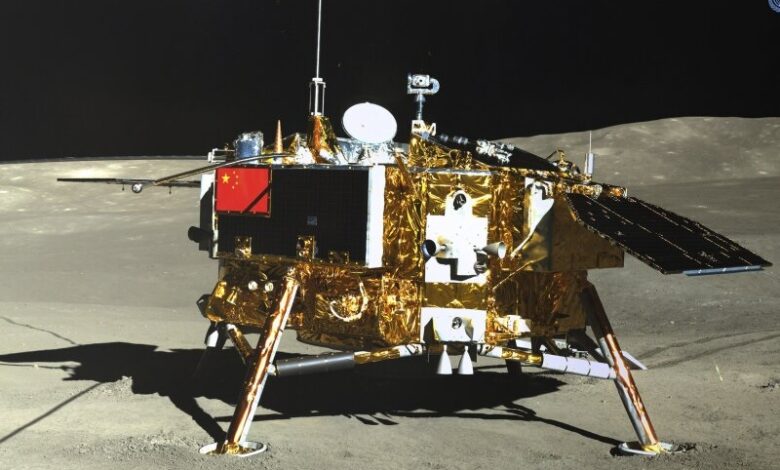Chinese Spacecraft Lands on Moon’s Far Side to Collect Samples

News Mania Desk/Agnibeena Ghosh/3rd June 2024
In a landmark achievement, a Chinese spacecraft successfully landed on the far side of the moon on Sunday, aiming to gather soil and rock samples that could offer valuable insights into the differences between this less-explored region and the more familiar near side. This mission marks a significant step in China’s ambitious lunar exploration efforts.
The landing module touched down at 6:23 a.m. Beijing time in the vast South Pole-Aitken Basin, a massive crater on the moon’s far side, according to the China National Space Administration (CNSA). This mission is the sixth in the Chang’e lunar exploration program, named after the Chinese moon goddess. It is the second mission designed to return samples to Earth, following the Chang’e 5 mission that successfully brought back samples from the near side of the moon in 2020.
The Chinese moon program is part of a broader effort to compete with the United States, which remains the leader in space exploration, and other countries including Japan and India. China has already established its own space station in orbit and regularly sends crews there. The nation aims to land a human on the moon by 2030, potentially becoming the second country to achieve this feat after the United States. Meanwhile, the U.S. plans to return astronauts to the moon for the first time in over 50 years, although NASA recently delayed this target to 2026.
Efforts in the U.S. to utilize private sector rockets for launching spacecraft have faced repeated delays. A planned launch of Boeing’s first astronaut flight was scrapped last Saturday due to last-minute computer issues. Similarly, a Japanese billionaire postponed his planned moon orbit mission due to uncertainties regarding the development of SpaceX’s mega rocket, which NASA intends to use for its moon missions.
For China’s current mission, the lunar lander is equipped with a mechanical arm and a drill to collect up to 2 kilograms (4.4 pounds) of material from the moon’s surface and underground over a span of approximately two days. The collected samples will be stored in a metal vacuum container by an ascender attached to the lander. This container will then be transferred to another module orbiting the moon, which will subsequently transfer it to a re-entry capsule. The capsule is expected to return to Earth, landing in China’s Inner Mongolia region around June 25.
Exploring the moon’s far side presents unique challenges due to its position facing away from Earth, necessitating a relay satellite to maintain communication. Additionally, the terrain is more rugged with fewer flat areas suitable for landing, making such missions particularly complex.






